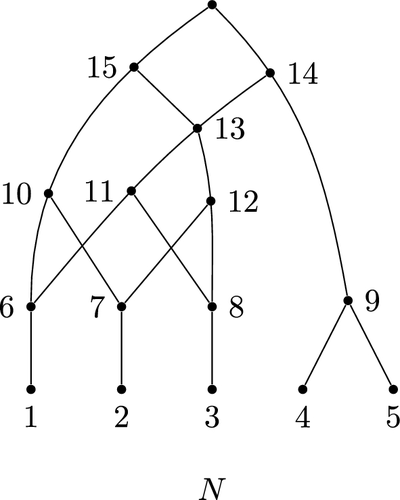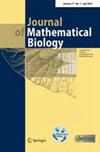Phylogenetic network classes through the lens of expanding covers
IF 2.2
4区 数学
Q2 BIOLOGY
引用次数: 0
Abstract
It was recently shown that a large class of phylogenetic networks, the ‘labellable’ networks, is in bijection with the set of ‘expanding’ covers of finite sets. In this paper, we show how several prominent classes of phylogenetic networks can be characterised purely in terms of properties of their associated covers. These classes include the tree-based, tree-child, orchard, tree-sibling, and normal networks. In the opposite direction, we give an example of how a restriction on the set of expanding covers can define a new class of networks, which we call ‘spinal’ phylogenetic networks.

从扩大覆盖面的角度看系统发育网络类别
最近的研究表明,一大类系统发育网络--"可标记 "网络--与有限集的 "扩展 "覆盖集合是双射关系。在本文中,我们展示了几类著名的系统发育网络是如何纯粹根据其相关封面的特性来表征的。这些类别包括树基网络、树子网络、果园网络、树同胞网络和正常网络。反过来,我们举例说明了对扩展覆盖集合的限制如何定义一类新的网络,我们称之为 "脊柱 "系统发育网络。
本文章由计算机程序翻译,如有差异,请以英文原文为准。
求助全文
约1分钟内获得全文
求助全文
来源期刊
CiteScore
3.30
自引率
5.30%
发文量
120
审稿时长
6 months
期刊介绍:
The Journal of Mathematical Biology focuses on mathematical biology - work that uses mathematical approaches to gain biological understanding or explain biological phenomena.
Areas of biology covered include, but are not restricted to, cell biology, physiology, development, neurobiology, genetics and population genetics, population biology, ecology, behavioural biology, evolution, epidemiology, immunology, molecular biology, biofluids, DNA and protein structure and function. All mathematical approaches including computational and visualization approaches are appropriate.

 求助内容:
求助内容: 应助结果提醒方式:
应助结果提醒方式:


